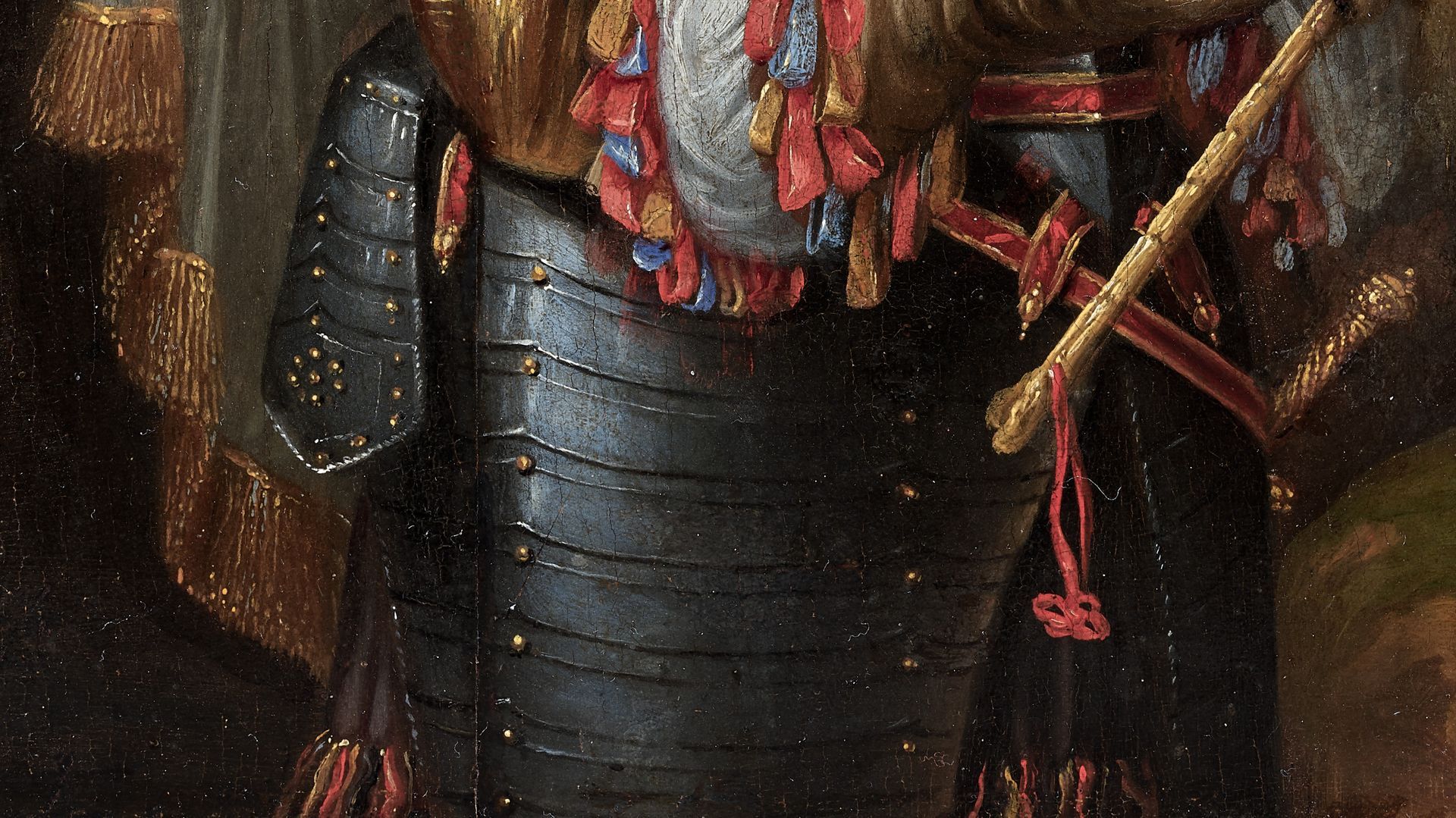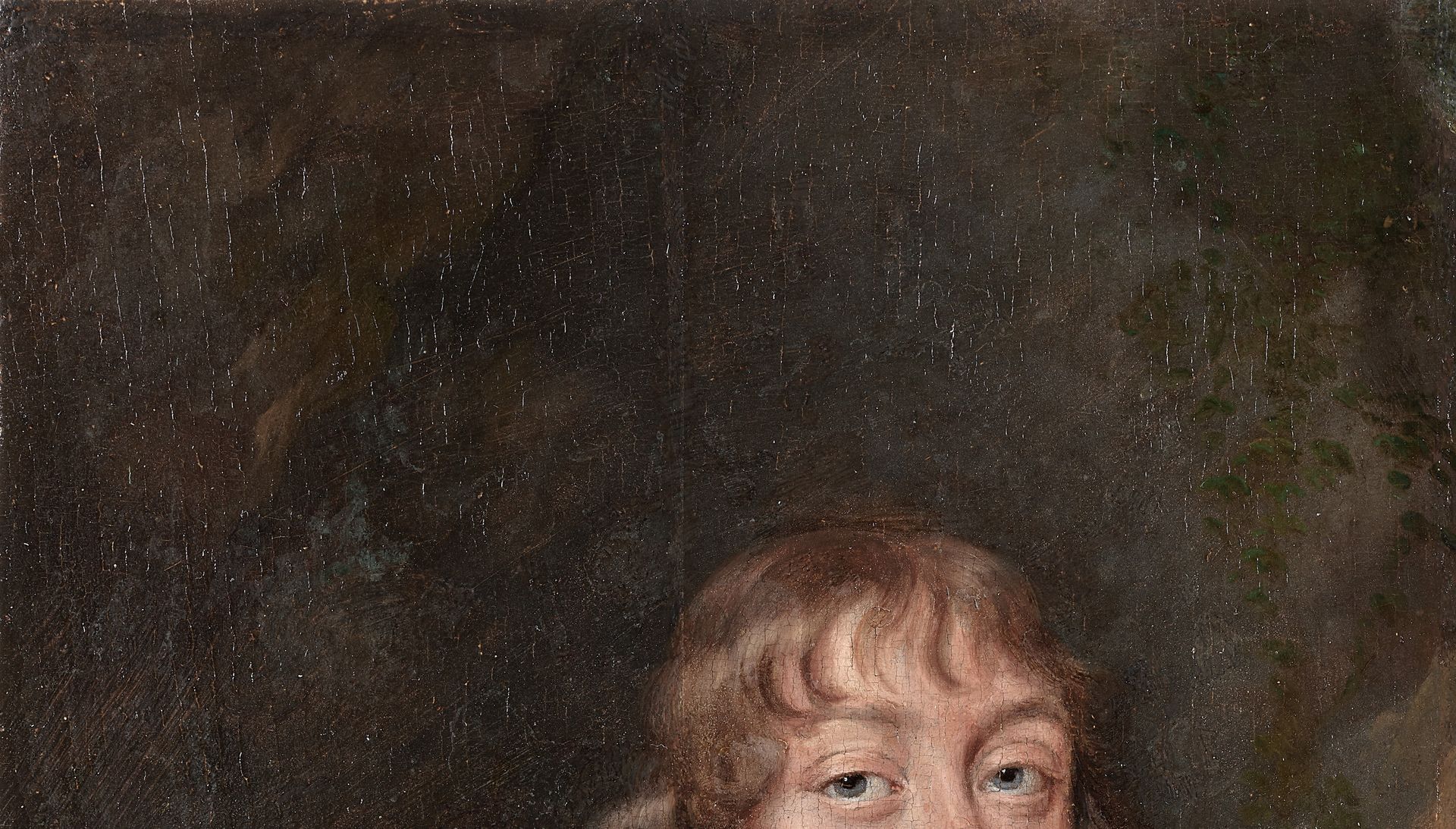
Louis ELLE known as FERDINAND the Elder (Paris 1612 – 1689 Paris)
Circa 1650
Portrait of Louis FABERT (1651-1669 Candia)
Oil on panel, 36.3 x 27.3 cm
Bears a pencil inscription on the reverse "M Lacouture / à / Franchesse"
PROVENANCE
· France, private collection, from a castle near Bergerac until February 2025
THE ARTIST
Nicknamed "Ferdinand" or "Elle Ferdinand", the Elle family were a family of painters of Flemish origin who were active between 1601 and 1717. The first of the line, Ferdinand Elle (circa 1580-1637), probably from Mechelen, came to France at the very beginning of the 17th century. A Protestant, he first worked in Fontainebleau, before settling in the Parisian district of Saint-Germain-des-Prés, where the master's house, taking advantage of the franchises granted by the abbey, readily welcomed foreign painters, unlike the Parisian guild. His name lacking originality, he became known by his first name of Ferdinand, later taken up by his descendants to better mark the continuity of the workshop: his two sons, Louis Elle the Elder or the Father and the engraver Pierre Elle (1617-1665), then Louis's son, Louis Elle the Younger (1649-1717).
A renowned portrait painter and master of the Saint-Germain guild, Louis Elle l'Aîné worked for the great Parisian families, the most eminent courtiers, and members of the royal family, including the Grande Mademoiselle, Queen Maria Theresa of Austria, Philip, brother of Louis XIV, and the sovereign himself. From February 1648, the artist belonged to the Academy of Painting and Sculpture, which elected him professor in 1659. The hardening of royal policy towards Protestants, however, led to his exclusion on March 10, 1681, causing him to lose part of his clientele and official commissions. Elle Ferdinand abjured two and a half months after the revocation of the Edict of Nantes on October 18, 1685, which allowed his immediate reinstatement to the Academy and a return to favor.
THE WORK
Our table is to be compared with the Portrait of Marshal Fabert (fig.1) (Panel by Melchior de Bout, 36 x 26 cm, sale at the Hôtel Drouot, Maître Joron Derem), identified by comparison with the portraits of Louis Ferdinand Elle kept at the Metz museum. Louis (1651-1669), Marquis de Fabert, received the government of Sedan as a survivor and died prematurely during the siege of Candia at the age of barely 18.
FIG.1.
The style and support are similar to the four portraits recently acquired by the Palace of Versailles (E. Vaysse, "Louis Elle "the Father" and the fashion for small portraits in Paris in the middle of the 17th century (1640-1660), in La Revue des Musées de France, 2019, 4, pp. 45-58).
Our painting completes the corpus of small portraits of Louis Elle that Elodie Vaysse lists in her article (op. sup.). On the back of our painting, we can see the mark, faded by the paper, of the panel maker Melchior de Bout (active in Paris from 1625-1626 to 1658). The support is composed of three panels of boards, like the series of four paintings acquired by the Palace of Versailles.
Our composition, very close to that of Marshal Abraham de Fabert (fig.1) and of the same dimensions, however, appears more careful. The model, very young, with the command sash, can only be Louis, son of the marshal, who was killed at the siege of Candia at the age of 18. Everything suggests that Louis ELLE will have painted the posthumous model, both in homage to Louis who died young in combat and in memory of his father Abraham.
General bibliography
- Elodie VAYSSE, Les Elle “Ferdinand”, painting as a legacy. A Parisian workshop in the Grand Siècle (1601-1717), thesis from the École des Chartes, dir. Alain Mérot, 2015.
- Jean AUBERT, Emmanuel COQUERY, Alain DAGUERRE DE HUREAUX (eds.), Faces of the Grand Siècle. French Portraiture under the Reign of Louis XIV. 1660-1715, cat. ex. Nantes, Museum of Fine Arts, Toulouse, Augustins Museum, Paris, Somogy, 1997.
PHOTOGRAPHS' DETAILS








